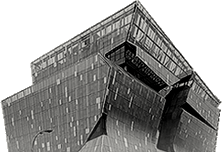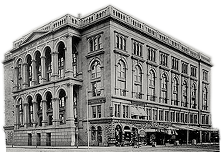Landscape & Abstraction: Painting and/or Drawing

Landscape & Abstraction with Josette Urso
Cost: $470.00
This class will take place online using Zoom. You will need a computer or device and we recommend downloading the Zoom app.
6 online sessions
Mondays, April 6 to May 11, 2026
6:15 pm–9:15 pm
The complexity of the landscape makes it a fitting subject for anyone interested in merging observation and abstraction through painting and/or drawing.
Work indoors from reproductions and photographs to be prepared for future open-air painting and drawing. Perfect your skills with layout, spatial relationships, color, paint handling and mark making, while at the same time emphasizing simplification and reinterpretation of your subject.
Speed of execution and economy of vision will be encouraged, as students identify and express the structural core and emotional impact of their subject. Students will execute numerous quick studies and develop more finished works while exploring various ways of making marks and handling paint.
This class is ideal for anyone from the beginner to the more advanced student who wants to expand their vision.
Required Supplies
- Scrap Paper
- Landscape photographs, postcards or other reproductions
Materials list for students who will be painting:
- Advice about paints brands:
- Choose professional quality watercolors in tubes: recommended brands are Winsor & Newton, Schmincke, Sennelier, Urtrecht, Old Holland
- Avoid student grade watercolors and the brands Winton and Cotman!
- REQUIRED COLORS
- Alizarin Crimson (a cool red)
- Cadmium Red Medium (a warm red)
- Cadmium Yellow Light
- Ultramarine Blue
- Neutral Tint (this is a very dark - dark color)
- Yellow Ochre
- OPTIONAL COLORS
- Windsor Blue (green shade) or Phthalo Turquoise
- Prussian Blue and/or Indigo
- Titanium White (watercolor or gouache)
- OTHER MATERIALS
- Watercolor Palette - a white palette made of plastic, metal or ceramic. The “John Pike” is a standard palette with a lid, but you can also use other white surfaces such as a dinner plate, enameled baking tray, or plastic disposable party plates (often found at the dollar store).
- Brushes - choice of medium to large flats and rounds. Don’t be shy of large brushes.
- Papers Pads, Blocks or Sheets. An assortment of surface types is recommended: cold press watercolor (has more texture) or hot press (smoother). This is a good opportunity to experiment. 11”x 14” or 18” x 24” are good sizes.
- Paper Towels
- 2 or 3 water containers
- White or off-white Drafting or Nichiban Tape
- Pencils, gum eraser, straight edge or ruler
Materials list for students who prefer to draw:
- Drawing Tools a small variety of fine point and bold pens and/or pencils of your choice. Some possibilities include: Kuretake brush pens, Faber-Castell Pitt Artist Pens, Pigma Micron Pens, Winsor and Newton Watercolor Markers, Sharpies, Ebony Pencils, China Markers. Color is OK too!
- General Purpose Drawing Pad (approx. 11 x 14 “, medium weight, smooth and white) or any paper or surface you currently have available.
Course Code: DR201
Instructor(s): Josette Urso




